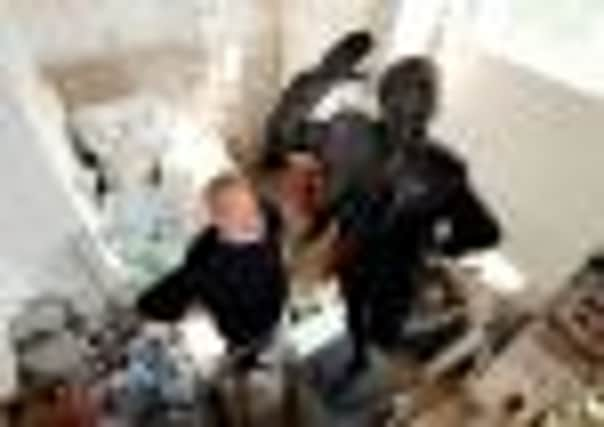From political icons to figures of fun, statues stand out


In Britain, though, we are far more reverential towards leaders from across the pond and yesterday Ronald Reagan became the latest US president to be immortalised in bronze on London’s streets.
The 10-foot statue of Mr Reagan will stand alongside existing statues of other illustrious American presidents including as Dwight D Eisenhower and Franklin D Roosevelt at Grosvenor Square.
Advertisement
Hide AdAdvertisement
Hide AdIt was unveiled as part of a year of celebrations to mark what would have been the former president’s 100th birthday and Foreign Secretary William Hague led the tributes to the former American leader.
“He joins the ranks of great men and women whose statues adorn our London streets; Nelson, Wellington, Lincoln, Churchill, Roosevelt, Edith Cavell and Nelson Mandela. Statues bring us to face to face with our heroes long after they are gone,” he said.
“Ronald Reagan is without question a great American hero; one of America’s finest sons, and a giant of 20th Century history. You may be sure that the people of London will take this statue to their hearts. Those who stop and look will be reminded of President Reagan’s extraordinary achievements, and all that he stood for as a man and a leader of men and women.”
By why, you might ask, all the fuss over a statue? Many people think of statues as crumbling relics of bygone eras, something out of the history books, that hold little relevance in our modern society. But statues of important figures and political leaders can still have huge significance.
Advertisement
Hide AdAdvertisement
Hide AdIn 2003, the toppling of Saddam Hussein’s giant statue in the main square in Baghdad became one of the enduring images of the war in Iraq and, at the time, symbolised the end of the Iraqi leader’s cruel and repressive regime. The metal plaque at the base of the statue was torn off and the marble plinth was attacked with a sledgehammer. A group of Iraqi men then scaled the statue to secure a noose around its neck, as these extraordinary scenes were watched by millions around the world live on TV.
Similarly, more than a decade earlier in Georgia, after it declared its independence from the old Soviet Union, statues of Stalin and Lenin were torn down across the country.
Public statues can galvanise people too. Nelson’s Column in Trafalgar Square has long been a focal point for people, whether it’s to hold a protest or rally, or to celebrate a national sporting triumph. If you travel to just about any major football stadium in the country you’ll find statues of the heroes of yesteryear, whether it’s Sir Bobby Charlton at Old Trafford, Bill Shankly at Anfield, or Billy Bremner at Elland Road.
But what is it about statues of famous figures that we feel so strongly about? During his career, the acclaimed Barnsley-based sculptor Graham Ibbeson has been commissioned to create sculptures of such much-loved people as
Advertisement
Hide AdAdvertisement
Hide AdBenny Hill, Fred Trueman, Laurel and Hardy and Eric Morecambe.
“Occasionally, just occasionally, a statue can be seen as an easy option,” says Ibbeson. “But essentially a public statue is a sculpture for the people and quite often it’s the general public who have demanded a statue of someone. When I did Eric Morecambe, for instance, people wanted a sculpture, there wasn’t really an alternative and I wanted to have him in that famous pose where he’s dancing with Ernie off stage. It doesn’t matter if they stop showing the re-runs on TV because there will always be a statue to remind people of him and make them smile.”
His statue of Morecambe has become the most photographed sculpture in the North West. “For me, they aren’t statues, they’re pieces of sculpture. You try and capture something of their personality that means something to you and that other people will recognise.”
Ibbeson is currently working on a statue of Leeds United manager Don Revie which is due to be unveiled at Elland Road next year. “I’m not a huge football fan, but when I think of Don Revie I think of his mop of wavy hair and his sheepskin jacket.
Advertisement
Hide AdAdvertisement
Hide Ad“For a lot of people statues can become something of a shrine, for other people they’re little reminders that help continue the memory. I’ve seen people looking at my Laurel and Hardy sculpture and a smile light up on their face, and that’s when you know you’ve done your job.”